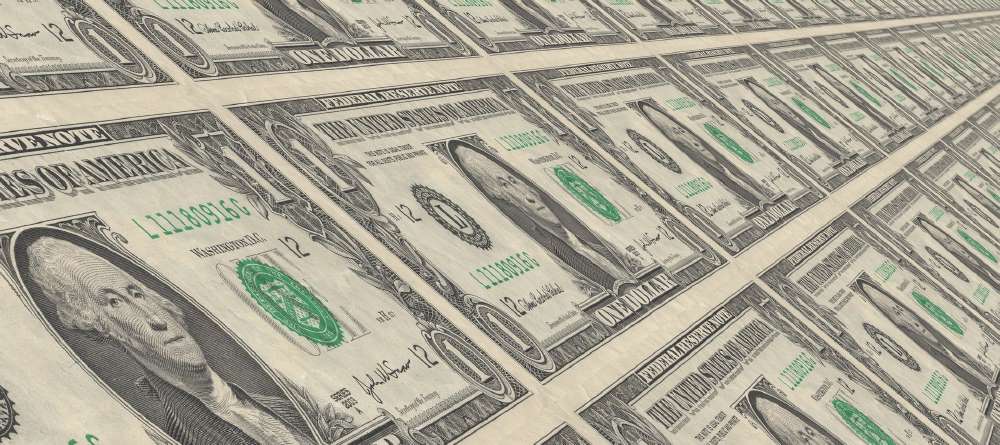How can the power of gamification be effectively utilized in the realm of finance? Welcome to “Leveraging the Power of Gamification in Finance!”
Are you ready to turn your personal finances into an exciting game? It may sound unconventional, but gamification is revolutionizing the way we approach financial management. By incorporating elements of gaming into everyday money tasks, we can transform what may seem like a daunting chore into an engaging and enjoyable experience. So, if you’ve ever wished you could tackle budgeting, saving, and investing with the same enthusiasm as leveling up in your favorite video game, then you’re in for a treat. In this article, we’ll explore how gamification is reshaping the finance industry and how you can tap into its power to level up your financial goals. But first, let’s dive into what exactly gamification in finance entails. At the end of this article, we will find out how important it is the power of gamification in finance.
The Effectiveness of Implementing Gamification in the Field of Finance
- Leveraging Incentives: Financial institutions can boost engagement by offering points, discounts, or exclusive benefits for specific actions, aligning incentives with users’ financial goals.
- Creating an Immersive User Experience: Designing finance applications with user-friendly interfaces, intuitive navigation, and visually appealing aesthetics enhances engagement. Interactive elements like quizzes and challenges make financial activities more memorable.
- Healthy Competition for Customer Engagement: Introducing leaderboards showcasing achievements fosters healthy competition among users. Safeguards are necessary to prevent negative outcomes, and emphasizing collaboration and shared goals cultivates a sense of community.
- Driving Customer Engagement through Gamified Learning Experiences: Gamified learning transforms financial literacy into engaging experiences. Interactive quizzes, challenges, and simulations enhance users’ financial knowledge, empowering them to make informed decisions.
- Utilizing User Analytics for Engagement Optimization: Gathering data on user behavior through gamification allows financial institutions to gain insights into preferences, engagement levels, and areas for improvement. Analyzing this data helps refine gamification strategies and enhance overall user engagement over time.
Advantages for Businesses in the Financial Sector
By integrating gamified learning, your bank can reap several tangible benefits that enhance both employee performance and client satisfaction.
You’ll notice improved engagement as employees find training more enjoyable and interactive. This increased engagement often leads to better knowledge retention, which is crucial in the ever-evolving financial landscape.
Moreover, gamified learning provides instant feedback, allowing your team to identify and address gaps in their understanding swiftly. This agility translates to more competent handling of client needs and a sharper competitive edge in the marketplace.
Additionally, the data-driven nature of gamified platforms enables you to track progress and tailor future training. You’re not just improving current skills; you’re also investing in the continuous development of your workforce.
Effective Techniques for Gamification – Teh Power of Gamification in Finance
Let’s consider now which techniques we can use to implement the power of gamification in finance. To effectively implement gamified learning in your corporate banking training, it’s essential to understand the key strategies that can drive success.
You’ll want to integrate game mechanics like points, badges, and leaderboards to foster a competitive yet collaborative environment.
Ensure the content is relevant and challenges your team in a way that’s both fun and educational.
Don’t forget to provide immediate feedback; it’s crucial for learning and engagement.
Mix in varying levels of difficulty to cater to different skill sets and keep everyone on their toes.
Begin by establishing specific goals that are in line with your overall business objectives.
Then, recognize and acknowledge accomplishments in order to foster a feeling of success.
These elements, woven into your training program, can significantly enhance learning outcomes and employee motivation.
Revolutionizing Financial Literacy: How Gamification Holds the Key to Engaging Learning Experiences
When it comes to learning about complex financial concepts, traditional methods often fall short in capturing the attention and interest of individuals. However, with the advent of gamification, a revolutionary approach to learning has emerged, igniting enthusiasm and transforming financial literacy education. By integrating game elements into the learning experience, gamification leverages the power of play to create engaging and interactive lessons that resonate with learners of all ages.
Gone are the days of textbooks and lectures that induce boredom and disinterest. Through gamification, financial literacy education becomes a dynamic and immersive experience that promotes active participation and knowledge retention. Whether through quizzes, simulations, or interactive challenges, learners can navigate through real-life financial scenarios in a safe and enjoyable environment. By facing virtual obstacles and risks, individuals can strengthen their decision-making skills and gain a deeper understanding of important financial concepts such as budgeting, saving, investing, and even entrepreneurship.
One of the key benefits of gamification is its ability to incentivize learning. By incorporating rewards, badges, and levels into the gameplay, individuals are motivated to continue their learning journey and achieve mastery. The sense of achievement derived from unlocking new levels or earning virtual currency fosters a positive learning experience and encourages individuals to persist in their financial education. Moreover, gamification promotes healthy competition, allowing learners to compare their progress with others and strive for improvement.
Boosting Customer Engagement and Retention: Unleashing the Potential of Gamification in Financial Services
Gone are the days when finance was considered a dry and serious industry. With the increasing adoption of technology, financial services have embraced the concept of gamification to capture customer attention, enhance engagement, and boost retention. Leveraging the power of gamification, financial institutions are transforming mundane financial transactions into immersive experiences that are not only informative but also enjoyable.
So, what exactly is gamification, and how does it work in the realm of finance? Gamification refers to the integration of game mechanics and design elements into non-gaming activities, such as financial planning, budgeting, and investing. By incorporating elements like challenges, levels, rewards, and leaderboards, financial institutions can motivate customers to actively participate in their financial journey, ultimately leading to better financial habits and a stronger connection with the brand.
One of the key advantages of gamification in finance is its ability to simplify complex financial concepts. Through interactive games and simulations, customers can gain a deeper understanding of topics like budgeting, investing, and retirement planning. By breaking down complicated concepts into bite-sized, interactive modules, financial institutions can empower customers to make informed financial decisions.
Furthermore, gamification encourages a sense of achievement and accomplishment. By setting goals and offering rewards, financial institutions can create a sense of progress and motivation for customers. This not only boosts customer engagement but also instills a sense of loyalty and satisfaction. Customers can track their progress, earn badges, and compete with others, fostering a healthy sense of competition and community within the financial services ecosystem.
Gamification also allows financial institutions to personalize the customer experience. By analyzing customer data and behavior, institutions can tailor gameplay and rewards to individual preferences and goals. This level of personalization not only enhances engagement but also builds trust and rapport with customers.
| Benefits of Gamification in Financial Services |
|---|
| Improved financial literacy |
| Increased customer engagement |
| Enhanced customer retention |
| Positive behavioral changes |
In conclusion, gamification has emerged as a powerful tool in the financial services industry, revolutionizing the way customers interact with financial products and services. By leveraging gamification techniques, financial institutions can not only boost customer engagement and retention but also empower customers to take control of their financial well-being.
Gamified Trading Platforms: A Winning Strategy for Empowering Investors and Driving Profits
Today, investors are constantly seeking innovative ways to engage with the financial markets and maximize their profits. Gamified trading platforms have emerged as a game-changer in the world of finance, offering investors a unique and exciting way to participate in trading activities.
One of the key advantages of gamified trading platforms is their ability to empower investors. By incorporating gamification elements such as virtual trading competitions, leaderboards, and achievements, these platforms provide a hands-on learning experience that fosters financial literacy and enhances decision-making skills. Investors can practice trading strategies in a risk-free environment, gaining valuable insights and confidence before venturing into the real market. This gamified approach not only promotes active participation and knowledge acquisition but also boosts investor engagement and motivation.
Furthermore, gamification in finance goes beyond just education and training; it also has a significant impact on profitability. By creating a sense of competition and accomplishment, gamified trading platforms incentivize investors to perform better and achieve higher returns. The engaging and interactive nature of these platforms keeps investors hooked, encouraging them to stay active and invest for longer periods. As a result, investors are more likely to make informed decisions, seize profitable opportunities, and ultimately drive their profits higher.
Overall, gamified trading platforms have revolutionized the way investors engage with the financial markets. Through the integration of gamification elements, these platforms empower investors by providing valuable education and training opportunities while also driving profitability. As the financial industry continues to evolve, embracing the power of gamification is undoubtedly a winning strategy for both investors and trading platforms. So are you ready to level up your trading journey and embrace the exciting world of gamified finance?
From Fun to Funds: Actionable Steps to Implement Gamification in Your Financial Business
Gamification has become a powerful tool in various industries, and the financial sector is no exception. By implementing gamification strategies, financial businesses can transform the way they engage with customers, motivate employees, and drive business growth. In this post, we will explore actionable steps that you can take to implement gamification in your financial business and leverage its power to enhance customer experiences and boost profitability.
1. Define your objectives: Before diving into gamification, it’s crucial to clearly define your objectives. What specific goals do you want to achieve through gamification? Whether it’s increasing customer engagement, improving financial literacy, or driving sales, having a clear understanding of your objectives will guide your gamification strategy.
2. Identify gamification opportunities: Once you have defined your objectives, identify areas in your financial business where gamification can be effectively implemented. For instance, you could introduce a gamified savings app that rewards customers for reaching savings goals, or implement a leaderboard system to incentivize healthy competition among employees. By identifying these opportunities, you can tailor your gamification efforts to target specific areas that will have the greatest impact.
3. Design engaging game mechanics: The success of your gamification strategy relies heavily on designing engaging game mechanics that capture the attention and interest of your target audience. Consider incorporating elements such as challenges, achievements, levels, and rewards into your gamified experiences. For example, you could create a financial education game that rewards users with virtual badges or unlocks new levels as they progress. The key is to make the experience enjoyable and rewarding, motivating your customers or employees to actively participate.
4. Integrate technology: To implement gamification effectively, leverage technology that supports your desired gamification features. Consider integrating mobile apps, virtual reality, or interactive web platforms that facilitate gamified experiences for your customers or employees. This will enhance the overall user experience and make engagement with your gamified offerings seamless. By embracing the right technology, you can create immersive and interactive gamified experiences that resonate with your target audience.
5. Track and analyze data: Once you have implemented your gamification strategy, don’t forget to track and analyze data to measure its effectiveness and make data-driven improvements. Monitor metrics such as user engagement, completion rates, and conversion rates to evaluate the impact of your gamified experiences. This data will provide valuable insights into what is working and what areas need refinement, allowing you to optimize your gamification strategy for maximum impact.
In conclusion, gamification has the power to transform the financial industry by driving customer engagement, motivating employees, and ultimately boosting profitability. We could consider the importance to implement the power of gamification in finance. That’s the way to implement the power of gamification in finance. By following these actionable steps and leveraging the right technology, you can implement gamification in your financial business and reap the countless benefits it offers. So, why not embrace the power of gamification and take your financial business to the next level? Start your gamification journey today! And that’s a wrap, folks! We’ve taken a deep dive into the exciting world of gamification in finance, and boy, what a wild ride it has been! From leveling up our financial knowledge to conquering those pesky budget hurdles, we’ve witnessed the power of gaming techniques transform our approach to money management.
Imagine a world where banking isn’t just about numbers and spreadsheets, but an adventure filled with quests, achievements, and rewards. A world where saving for a rainy day feels as thrilling as slaying dragons in a mythical realm. Well, thanks to gamification, that world is no longer a fantasy.
Through cleverly implemented game mechanics, financial institutions are revolutionizing the way we interact with money. They’ve gamified the often tedious tasks of budgeting, investing, and even paying off debts. Suddenly, the once-dreaded budgeting process becomes an opportunity to earn points, unlock virtual badges, and show off our progress to our friends. Who knew finance could be this fun?
But it’s not all about the thrill of the game. Gamification in finance has some serious benefits too! By turning financial goals into achievable milestones, gamification encourages us to stay motivated and disciplined. It transforms learning about personal finance from a chore into an enjoyable habit. And let’s not forget the power of healthy competition – pitting ourselves against friends or family can motivate us to save more, invest better, and ultimately level up our financial success.
We could consider key strategies to implement the power of gamification in finance. Also, we could consider the power of gamification in finance. However, just like any game, gamification in finance requires some strategy. Developers and financial institutions must strike a delicate balance between engagement and education, making sure that the game elements enhance financial literacy rather than overshadow it. After all, we don’t want to end up caught in an addictive cycle of flashing graphics and virtual rewards, losing sight of the real-world importance of our financial decisions.
So, whether you’re a seasoned gamer ready to conquer new financial horizons or simply someone looking for a fresh, engaging approach to personal finance, gamification holds immense potential for each and every one of us. It’s time to power up our wallets, embrace the gamified revolution, and unlock our true wealth-building potential. Game on!
MKTPlace is a leading digital and social media platform for traders and investors. MKTPlace offers premiere resources for trading and investing education, digital resources for personal finance, news about IoT, AI, Blockchain, Business, market analysis and education resources and guides.













